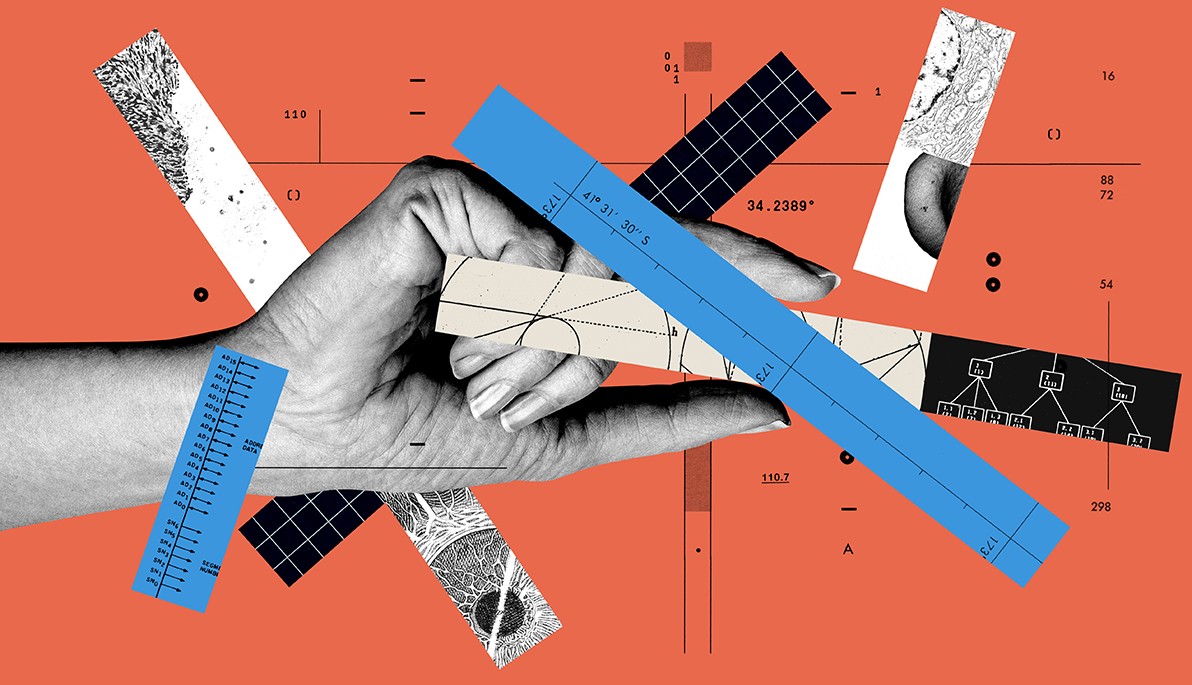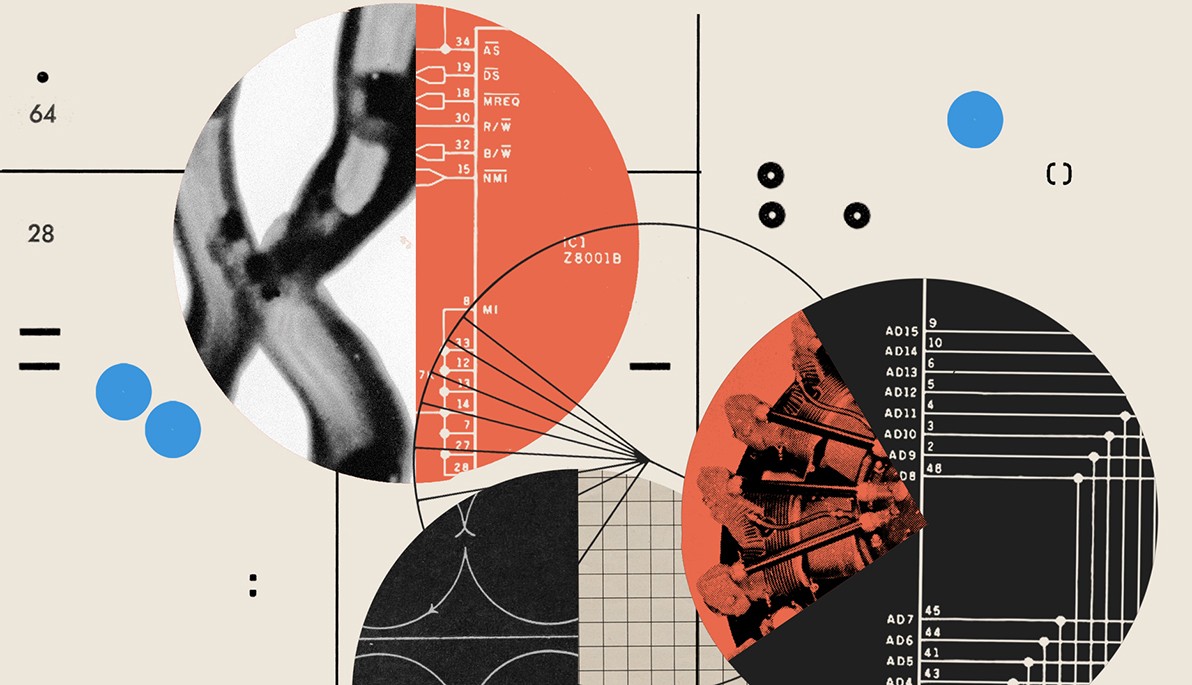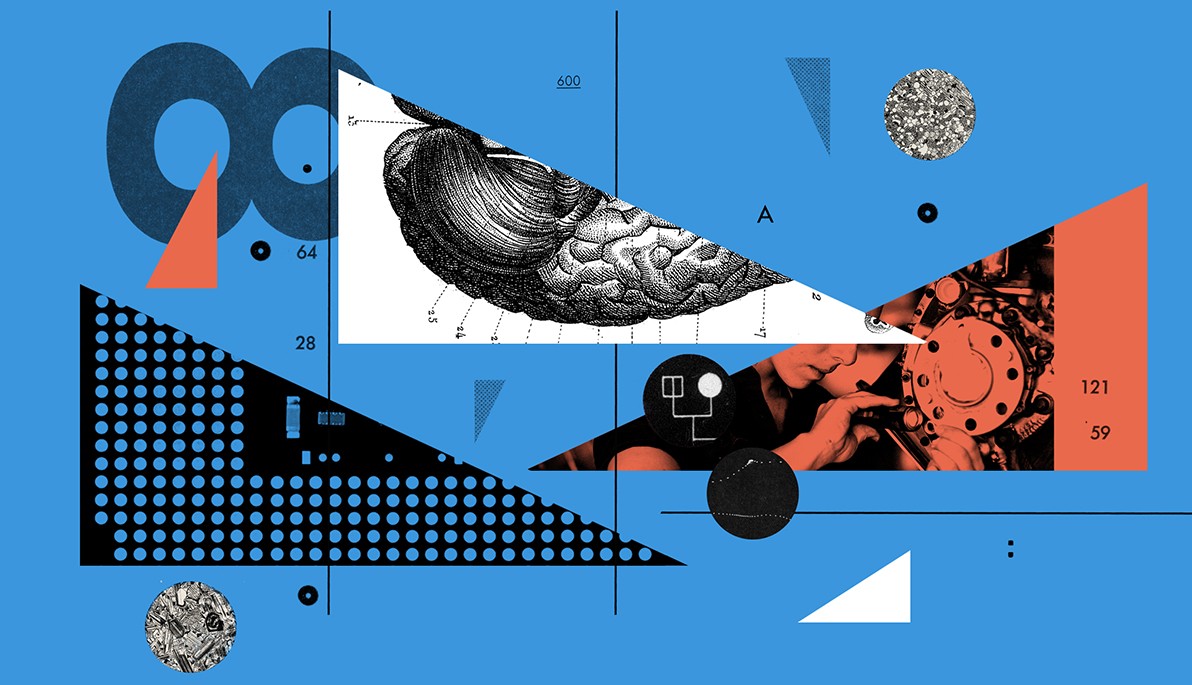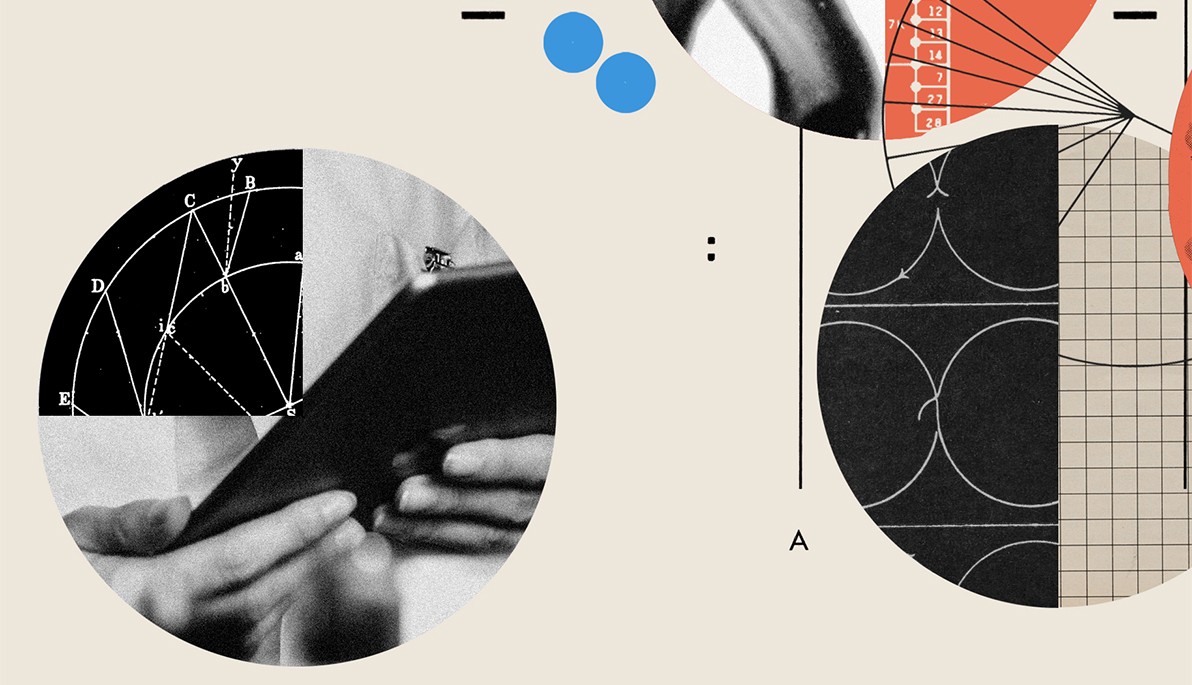
Taking a Bold Step
November 29, 2023
As a D.O./Ph.D. student at the NYIT College of Osteopathic Medicine (NYITCOM), Kelly Borges has focused her dissertation research on the role of vascular calcification in the development of Alzheimer’s disease.
“As we age, our vessels are calcifying somewhere in our bodies. Atherosclerosis or heart disease will add to that calcification burden,” she says. “My hypothesis is that if you have a higher burden, you may be more predisposed to Alzheimer’s.”
Borges came to NYITCOM to pursue her dual degrees after working in clinical research at both the University of Pennsylvania and Yale University, experiences that solidified her interest in clinically relevant research and her desire to serve as a principal investigator on major studies. Now beginning the second year of her doctoral study, she is in the process of applying for a National Institutes of Health (NIH) fellowship to fund her research—the first student in the history of New York Tech to submit this type of grant proposal.
She has an excellent role model in her doctoral advisor Olga Savinova, Ph.D., assistant professor of biomedical sciences whose research to improve the understanding of atherosclerosis (hardening of the arteries) and deliver a new treatment for heart disease is supported by a five-year $1.8 million grant from the NIH National Heart, Lung, and Blood Institute.
Borges and Savinova exemplify New York Tech’s efforts to support and increase cutting-edge research by students and faculty, efforts that have grown organically over the last 15 years and more formally under the leadership of President Hank Foley, Ph.D., who announced last year a goal for the university to achieve Research 2 (R2) status by 2028.
“Academia is changing at an astonishing rate,” says President Foley. “For many institutions, the simple transfer of knowledge has not been sustainable. To survive and thrive, we need to not only be in the business of transferring knowledge but of creating new knowledge.”
Throughout history, universities have been the hub for the advancement of discovery, innovation, and creation of new knowledge. In the United States, that activity and the scholars behind that drive are concentrated at research universities.
“Academia is changing at an astonishing rate. For many institutions, the simple transfer of knowledge has not been sustainable. To survive and thrive, we need to not only be in the business of transferring knowledge but of creating new knowledge.”
President Hank Foley, Ph.D.
But colleges and universities differ in the priority they place on research activity. In the United States, the leading measure of an institution’s research activity and output has been through independent assessment by the Carnegie Commission on Higher Education. The assessment, conducted every three years, uses empirical data—primarily the number of doctoral students graduated and the university’s research expenditures—to confer an institution’s classification, ranging from those that are teaching colleges only to those with the highest research activity.
Currently, New York Tech is classified as doctoral/professional (formerly known as R3), grouped among schools with moderate research activity and those that have medical schools. R2 is designated to higher education institutions with “high research activity.”
In general, this requires graduating at least 20 doctoral students each year and spending more than $5 million each year on research.
Those efforts are underway.
A Road Map to R2

A chemist who holds 16 patents, President Foley says his own 40-year research career was sparked by assisting a professor with research as an undergraduate. “It had a profound impact on my college experience,” he says.
When he took the helm of New York Tech, one of his first priorities was to ensure there was enough research activity among faculty to provide those types of experiences to students.
During his tenure, three doctoral programs were launched, including D.O./Ph.D. in osteopathic medicine/biological sciences, engineering, and computer science.
“It became very evident to me early on that there was a drive among our best faculty to move toward doing more research and to providing the highest level of graduate education,” he says. “Once I realized we had a critical mass of people who wanted to pursue this, I was 100 percent behind committing resources to move the institution forward in this direction.”
In 2023, Jerry Balentine, D.O., was promoted from executive vice president, interim provost, and chief operating officer to provost and executive vice president, a position created to evaluate new opportunities for university growth and expansion and oversee resource allocation, especially in the area of faculty research. Prior to that, one of his initiatives was to hire an outside consulting firm, which interviewed faculty, administrators, and staff to develop a road map to achieve R2 status. The report, issued in summer 2022, resulted in the hiring of New York Tech's first vice provost for research, Jared E. Littman, Ph.D., who joined the university in June 2023 and will lead research efforts.
In June 2022, Michael Hadjiargyrou, Ph.D., chair of biological and chemical sciences and director of the D.O./Ph.D. program, was named New York Tech’s first distinguished professor. And in July 2023, Anthony (Martin) Gerdes, Ph.D., chair of biomedical sciences at NYITCOM, was named New York Tech’s first university professor. “These are designations bestowed at top research universities to recognize outstanding faculty who have accomplished an extraordinary scope of scholarly research and are highly regarded in their fields,” says Balentine. “Establishing these professorships supports our goals of becoming an R2 university.”
Another important step is evaluating and adjusting existing processes and policies to support research. For instance, the university’s standard laptop provided to faculty would not be adequate for someone engaged in advanced mathematical modeling. “Those are the kinds of things we’re looking at,” says Balentine.
An inventory and assessment of current research space is also underway. Renovation of engineering labs on the New York City campus is already in progress. In September, construction began on the Biomedical Research Innovation and Imaging Center (BRIIC), a 20,000-square-foot basic science and microscopy laboratory that will support medical and interdisciplinary microscopy research. The project will provide a 2,880-square-foot open lab space with 48 lab benches designed with flexible infrastructure to allow for reconfiguration of the benches as needed to accommodate researchers. Additional research spaces include a 3-D STED (stimulated emission depletion) microscope, core labs, fume hoods, tissue culture rooms, freezer room, and an autoclave.
New faculty are being hired to build areas where New York Tech already has research strength. “Particularly at the nexus of the sciences, engineering, and medicine, we’re in a very strong position to grow research, and we’re doing everything we can to try to drive that forward,” says President Foley.
In addition to the three doctoral programs in place, a doctoral program in anatomy is in the process of certification and additional programs in biology and chemistry are under consideration. “This should get us to the requisite number of doctoral graduates within five years,” says Balentine.
The Research/Classroom Connection

But research doesn’t happen in a silo. In the best scenarios, faculty research informs professors’ teaching in a way that excites and engages students. Both undergraduate and graduate students benefit from learning on state-of-the-art equipment, in state-of-the-art laboratories and from those working at the leading edge of their discipline.
“Our strategy as an institution hasn’t been just to grow, but to enhance the quality of the experience for the students who are here,” says President Foley. “Having research experiences where students can work directly with a mentor and develop a portfolio is part of that.”
Eve Armstrong, Ph.D., assistant professor of physics, was one of more than 20 faculty hired in 2019. She has actively engaged undergraduate students to assist in her computational research that explores the death of supermassive stars. “We’re inferring the origins of the physics underlying these explosions based on available data we are able to collect here on Earth, using New York Tech’s supercomputing cluster to run simulations,” she says.
Armand Ahmetaj (B.S. ’23) became Armstrong’s student research assistant, recruited after taking her introductory physics course. Ahmetaj, who majored in life sciences with a concentration in biomedical engineering and math, says he was attracted to the position for the opportunity to work with the high-performance computing clusters and learn parallel computing—the ability to run many computational tasks or computational processes in parallel so you could have a more efficient process in terms of time and also in terms of memory. “I knew these were skills I could use in other areas of research,” he says.
Initially, Ahmetaj helped Armstrong convert computer files from the University of California, San Diego, her previous institution, to the computing software used by New York Tech, which neither were familiar with. “We had to learn it together,” he recalls. “I would stay up until 3 a.m. trying to figure things out. When we got our first job to run and got results, we were pretty excited. From that point on, I was able to help her make the process more efficient by writing other Python scripts that allowed her to run multiple experiments in a very short time.”
Ahmetaj is co-author with Armstrong on two papers published during his three years working with her. Now beginning a master’s program in bioengineering at New York Tech, he will embark on his own research, drawing from his undergraduate experiences.
“You can learn a lot in the classroom—for instance, gain some expertise in using a software,” he says. “But when you’re using it for research purposes, you get to see the practical application of your skills in real life.”
“Ph.D. students are here for a longer period, spending more time on research, and are expected to dive deeper into hard and unsolved research problems as well as take leading roles on the research problems of the current projects.”
Associate Professor Batu Chalise, Ph.D.
That’s not an anomaly. Batu Chalise, Ph.D., associate professor of electrical and computer engineering, researches signal processing for radar and communications and currently has two funded projects, one supported by the Army Research Laboratory and a second funded by the Naval Research Laboratory. “Research on future generation radar systems provides an excellent platform for students to understand principles of modern and future radar technology, develop mathematical modeling and algorithms, conduct simulations, collect data in a realistic radar environment, and implement both hardware- and software-based experiments,” he says.
Students who have gained radar experience from assisting on his projects have gone on to get jobs with firms such as Northrop Grumman and Telephonics. “And I have used the outcomes of these research projects to enrich undergraduate and graduate-level courses related to signal processing, digital communications, radars, and probability and stochastic processes,” he says.
Chalise believes an increase in the number of graduate students in his department will be a boon to his research. “Ph.D. students are here for a longer period, spending more time on research, and are expected to dive deeper into hard and unsolved research problems as well as take leading roles on the research problems of the current projects,” he says. “This frees up primary investigators to submit new grant proposals, and the chances of securing grants will increase if we are a research-intensive R2 university.”
Institutional Support for Expansion

In many regards, the effort to expand research at New York Tech grew out of NYITCOM. In 2007 Kurt Amsler, Ph.D., was recruited as associate dean for research charged with growing a research program in the medical school.
At that time, Amsler says the school was primarily focused on teaching. “There was almost no one with external funding,” he says. “Facilities and equipment related to research were modest at best, and there wasn’t much faculty interest.”
It’s important to note that research—particularly in STEM fields—is not cheap. Amsler says it was an institutional commitment to purchase the scientific equipment necessary to conduct research on a competitive level that got the ball rolling. “We started virtually from scratch, beginning with the acquisition of our first confocal microscope,” he says.
Concurrently, the school began hiring faculty who were interested in research as well as teaching, which has led to significant growth in biomedical research—particularly in areas such as cardiovascular diseases, including heart failure and vascular calcification, and neurological diseases, including in the areas of Ehlers-Danlos syndrome, Parkinson’s disease, autism spectrum disorder, Alzheimer’s disease, and more.
One of the beneficiaries of the push toward becoming a more research-focused medical school is Joanne Donoghue, Ph.D., professor and director of clinical research. While Donoghue has studied exercise physiology and nutrition for 25 years, she has recently emerged as a national leader in esports medicine, which focuses on the prevention and treatment of repetitive-use injury. That expertise has led to consulting for the U.S. Space Force.
Donoghue is enthusiastic to see institutional priority for research expand. “We are doing great work here and have so much potential to expand,” she says. “Becoming an R2 would enable us to attract top researchers to help us grow our areas of strength and to increase external funding. In the grand scheme of things, we are a young institution. This is a bold and exciting step.”
This article originally appeared in the Fall 2023 issue of New York Institute of Technology Magazine. Read the full issue.
By Renée Gearhart Levy
More Features

An Alumnus’ Commitment to the Environment
As an energy management graduate from New York Tech’s Vancouver campus, Jasdeep Gulati (M.S. ’22) is highly invested in educating people about environmental and climate sustainability.

Vancouver Faculty Win University-Sponsored Research Awards in New Program
The new Global Impact Research Grant (GIRG) program has been developed to keep Vancouver-based faculty connected to faculty and research projects being conducted on the university’s New York campuses.

Studying Climate Change One Degree at a Time
Junhua Qu (M.S. ’24) began her collegiate journey in Beijing. But, her interest in climate change took her to New York Tech’s Vancouver campus to study energy management.